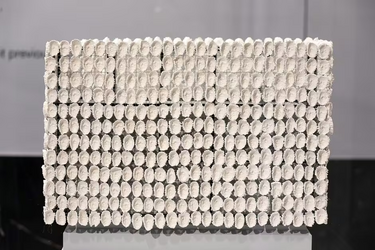
Sadiq Khan has been criticised for effectively blocking a statue of Queen Elizabeth II in Trafalgar Square until 2030 at the earliest - with "woke art" going there instead.
The London Mayor has signed off on the empty Fourth Plinth, where campaigners hope to erect the statue of the beloved late monarch, for "woke" art until the end of the decade.
The first piece to go up for six months will be a fixture of 850 faces of trans people who were mostly sex workers.
It is understood that if Tory mayoral rival Susan Hall defeats Mr Khan on May 2, she will reverse his decision and find an alternative site for the items - while organising for a new statue of the late Queen to be commissioned and erected on the empty plinth.
Ms Hall was outraged by Mr Khan's decision, which goes alongside his plans to give "woke" Left-wing names to London Overground lines.
Last week, Mr Khan approved £1million of Londoners' money to fund Fourth Plinth installations in 2026 and 2028. It means a new statue of the late Queen would not be able to go up before 2030.
The Labour London Mayor has never ruled out a statue of the late monarch but has not supported the project in regards to Trafalgar Square.
A spokeswoman for the Mayor of London said: “The Mayor wants to ensure we have a fitting memorial to our longest serving monarch. He supports the creation of the Queen Elizabeth Memorial Committee, which is being supported by the Royal Household and chaired by the former Private Secretary to Queen Elizabeth II. The Mayor stands ready to support the recommendations of the committee, whatever they are.”
The mayoral decision also confirms that Improntas, the winning entry from the 2024 commission, will be installed on the plinth this August.
A Tory source said: "Susan has committed to working with the Queen Elizabeth Memorial Committee and the Royal Family to offer a permanent memorial to the late Queen on Fourth Plinth.
"The Improntas sculpture and any future commissions would have to be moved to accommodate that."
As well as depicting the faces of trans sex workers, the totem will be “infused with their hair and skin cells” and left to “deteriorate” in London’s weather, according to the official description.
Adverts have been sent out inviting trans people to participate and cast their faces, with most being "marginalised" sex workers.
The artwork is costing £140,000 to produce, plus a £30,000 artist’s fee, which is paid for by London taxpayers. For the 2026 and 2028 installations, yet to be announced, it is understood this will be increased to £200,000 of production costs.
Less than a quarter (23 percent) of Londoners approved of the totem, while 42 percent said they disliked it, according to YouGov polling from when it was first shortlisted in 2021.
When the work was first commissioned, Mr Khan said the work would “encourage discussion about the fight for freedom and equality”.
https://www.express.co.uk/news/poli...e-art-queen-elizabeth-statue-trafalgar-square (Archive)














